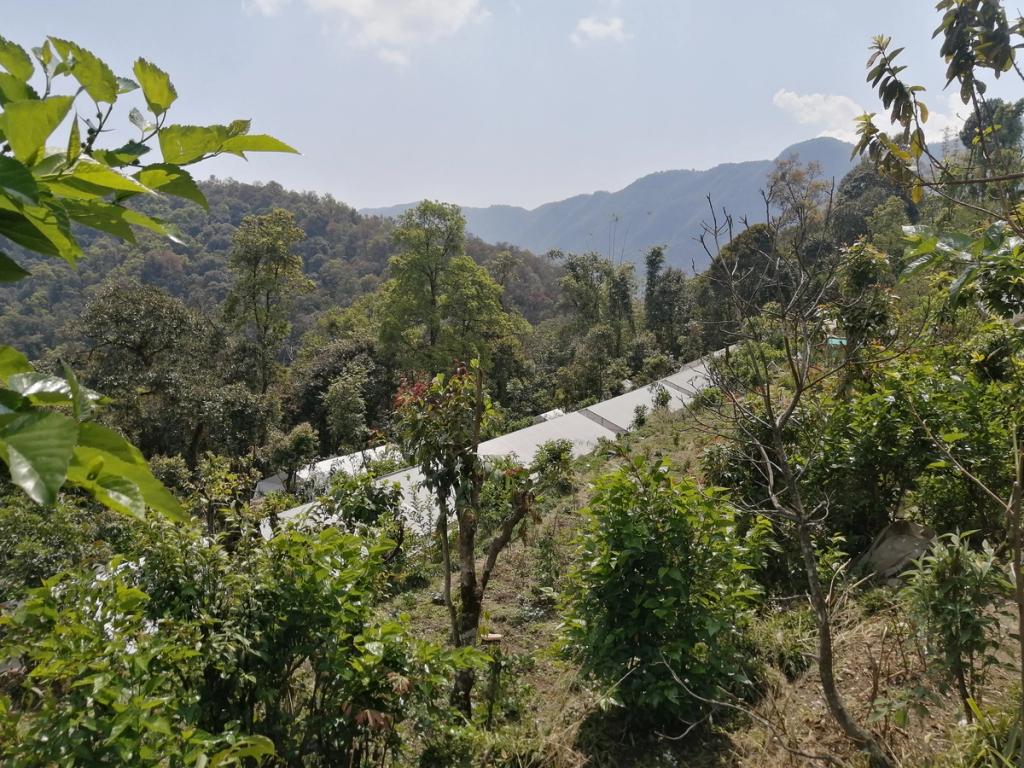Resources Agroforestry products
Agroforestry products

Postaraj Chapai
Mon Feb 13 2023

Agroforestry is about harvesting healthy and valued forest products from healthy soil, including fruits, medicinal plants, and superfood-related products with very little care of our local forest, even by performing no dig farming to keep existing soil happy and healthy, by allowing some environment-friendly activity for all local inhabitants.
Himalayan green forest, the major income source of high-value local products in the growing green market, income from fresh air and clean water, diversity in the natural soil of green shadows in terms of a salter and cure for us, where the sustainable forest behavior will always matter to contribute towards sustainable economic movement because of a valuable and reliable natural source of enterprise-based quality local products, where lots of livelihood opportunities are concerned around the buffer zone people and their farmlands management and skill development.
Our forests are capable to produce a variety of valuable, spices, herbs, fruits, vegetables, tea, and coffee in a mixed manner they are also the major source of animal husbandry beekeeping. The green fountains are nourishing the habitat for various creatures and life, where possibilities arise with additional forest products by improving some Indigenous and ancient farming techniques, of course with some better tools for easy and better-quality production practices, that we always associate and concern with our member for their environmentally friendly products.
We aim to restore forest value and enhance the green economy through sustainable methods and s, practices and participating with the local community even though valuable creatures and plants can be almost impossible to keep alive without proper knowledge of nature conservation.
We are trying to express some local knowledge of agroforestry which may greater production in a managed forest. We believe by sharing each other's ideas and knowledge will significantly contribute to our sustainable development initiatives through the established framework of the agroforestry mechanism with raising the value of the managed forest.
1. Soil Selection
Sustainable agroforestry is a process to keep the soil rich and healthy, we must be sensible with it, we can measure the PH value of the soil and the water to determine what changes are required to improve for better production.
Soil building is an ongoing process in every forest land where trees fall their leaf, old branches, and bushes leave their old remains, all insects, animals, and plants are connected to compost the ground so there is no need for additional fertilizer or do not require to dig the soil much, but love and care are needed where million microorganisms exist happily.
for a most balanced mature, but sometimes it requires some additional activities like mulching, pruning, and clearing the bushes or better accent of air and sunlight into the ground, it starts to help our plants to grow happier and healthier each other together in a dynamic way, sometimes we may need to irrigate to the land by holding some topsoil or water above the hillside to maximize the output of the forest soil.
2. Climate and landscape
North and Nouth sided, thousands of miles of Himalayan green range is home for all, Himalayan snow melting is a burden for the whole ecosystem on earth, many species are lost and in endanger, and the value is on the verge of collapse a serious and sensitive issue of the higher alpine, subtropical and tropical forest land has been degrading, the most productive land for herbal medicine, fruits, and vegetables, animals, and water, should be taken care and need to multiply the value of our forestry ecosystem. Sustainable harvesting practices need to be adopted and the lost can be restored.
Here are some major forest practices we like to mention for sustainable agroforestry.
3. Animals and birds.
We are aware of not to harm any forest inhabitants, so we identify such animals around and what activities they are doing in nearby areas, mostly they are searching for food and water, it is all-important to keep their grazing management and maintain the source of their happy and healthy life, our farmers, local groups or the community can plant extra fruits and berries, but sometimes we can choose to plant, the opposite of what the animal doesn't like, it will help stop coming to our farming land.
4. Keep the plant safe
Whatever we find in the local area is valuable as they are native to force ecosystem and to enable the water resources, we help them to maintain their growth and a sustainable harvest the way, like the Himalayan Paris (Satawa) above 1900-3500 meter, its need to leave the 1/4 of front rhizome under the soil before harvesting, which helps to double the growth and save the species.
5. Hybrid or GMO seeds!
Do not disturb genetic germination rather our gold standard natural forest land has to keep the hybrid and GMO seeds away there are many seeds. Genetically modified plants will affect the whole environment of the forest species, it may harm the natural plants, animals, and overall ecosystem so we avoid such seeds and farming practices nearby forest land, instead, we can easily share the seed and knowledge from each other forest network, community forest group, local enterprises, they can also share their techniques each other together.
6. Fire control
Fire control is a major task for the forest from a disaster so it is essential to store some tools and keep them with you plus the fire control line is a good insist you can work for that in a group, cleaning the farm itself help to keep the entire forest safe, fire control is the emergency task before and in case forest catch fire, we also can manage water storages, drainages, and bush control around the firm in a proper manner, which help to grow the forest denser, some fire resistance suits tools and first aid and water preparation is essential for every forest nearby community and farm safety.
Live naturally healthy and happy.
